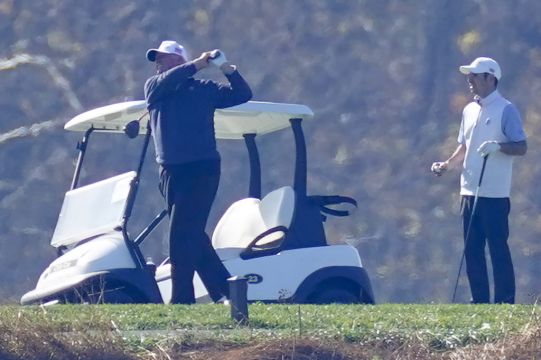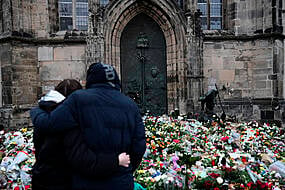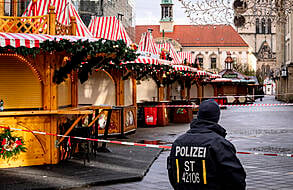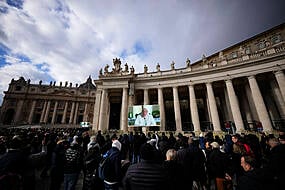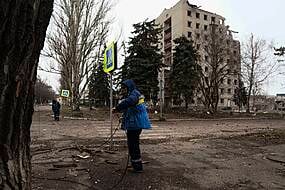Turn-out in the US election has hit a 50-year high and eclipsed the record set in Barack Obama’s triumph in 2008, in what analysts are calling an extraordinary engagement in what amounted to a referendum on Donald Trump’s leadership.
The figures came as Mr Trump maintained his silence despite earlier threats of legal action to prove voter fraud, a stance now interpreted as less about trying to change the result as providing an off-ramp for a loss the president cannot grasp.
With votes still being counted on Sunday, the tallied ballots accounted for 62% of the eligible voting-age population in the US. That is a 0.4 percentage point increase so far over the rate hit in 2008, when the nation elected its first black president.
The sheer number of votes also set records, although that is a less remarkable milestone given the country’s growing population.
So far 148 million votes have been tallied, with Democrat Joe Biden winning more than 75 million — the highest number for a presidential candidate in history. Mr Trump received more than 70 million — the highest total for a losing candidate.
Election experts and partisans are already debating the forces behind the swell of civic participation.
Some called the numbers a result of many states expanding the time and the ways in which voters could cast ballots. Others noted the extraordinary high passions Mr Trump provoked — both for and against.
The result is the highest turn-out rate from eligible voters since 1968, according to data from the Associated Press (AP) and the United States Elections Project, which tracks turn-out. Experts think the 2020 rate could hit heights not seen since the beginning of the 20th century, before all women were allowed to vote.
“It’s hard to imagine we can get higher than this,” said Michael McDonald, a political scientist at the University of Florida who runs the Elections Project.

An AP analysis shows that some of the biggest turnout increases to date occurred in states that liberalised their mail-voting rules. In two states where it was expanded significantly, Montana and Vermont, turn-out rose by more than 10 and nine percentage points respectively on the previous presidential election, enough to put those states into the top 10 for increases.
Many of the states with the biggest turnout increases — including Arizona, Texas and Georgia — were new battlegrounds in the presidential race, places where Democrats sought to mobilise new voters and shift Republican strongholds.
Meanwhile, Trump campaign aides, senior Republican officials and other allies have told AP the president’s threatened legal action is more about creating a more palatable exit strategy from the White House and keeping supporters on side than it is about proving electoral wrongdoing.
Mr Trump has vowed to take legal steps while refusing to concede to Mr Biden, and is making an aggressive pitch for donors to help finance any court battle.
He and his campaign have levelled accusations of large-scale voter fraud in Pennsylvania and other states that broke for Mr Biden. So far they have been made without proof, but senior figures connected with the president say evidence of fraud is not really the point.

Aside from providing one pathway out of a defeat the president is struggling to accept, Trump aides and allies have also privately acknowledged the legal fights would at best forestall the inevitable.
Some told AP they also had deep reservations about the president’s attempts to undermine faith in the vote, but most agreed he and a core group of loyalists were aiming to keep his base of supporters on his side even in defeat.
“He intends to fight,” Mr Trump’s economic adviser Larry Kudlow said as it was becoming clear that the president was headed for defeat.
Asked would Mr Trump ever concede, the president’s long-time friend and adviser Roger Stone – whose prison sentence was commuted by Mr Trump in July – said: “I doubt it.”
On Fox News Channel’s Sunday Morning Futures, Trump lawyer Rudy Giuliani said two additional lawsuits were in the process of being drafted, in addition to existing litigation in Pennsylvania.
Mr Giuliani predicted the campaign would have filed “four or five” lawsuits by the end of this week, with a total of 10 possible.

Lawyers could potentially argue certain vote tallies should be cast aside over fraud observed by poll watchers.
But in order to win that argument they would need evidence, not just allegations uttered so far that Republican count monitors were not allowed to see clearly enough.
Democratic poll watchers, who were also given the same access, have not raised concerns.
Even Mr Trump’s own administration has pushed back at the claims of widespread voter fraud and illegal voting, while not mentioning it was Mr Trump making the allegations.
The Cybersecurity and Infrastructure Security Agency, the federal body that oversees US election security, also noted local election offices had detection measures that “make it highly difficult to commit fraud through counterfeit ballots”.
Top election officials in the battleground states of Arizona, Georgia, Michigan, Pennsylvania and Nevada – both Republican and Democrat – have all said they see no widespread voting irregularities, no major instances of fraud or illegal activity.
